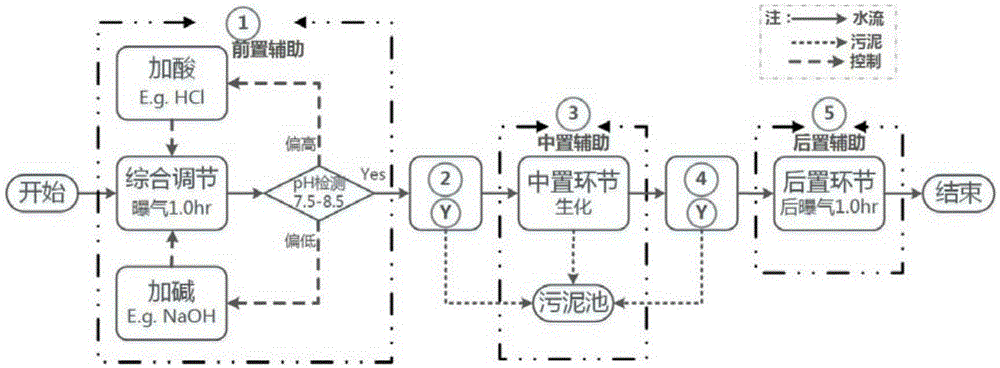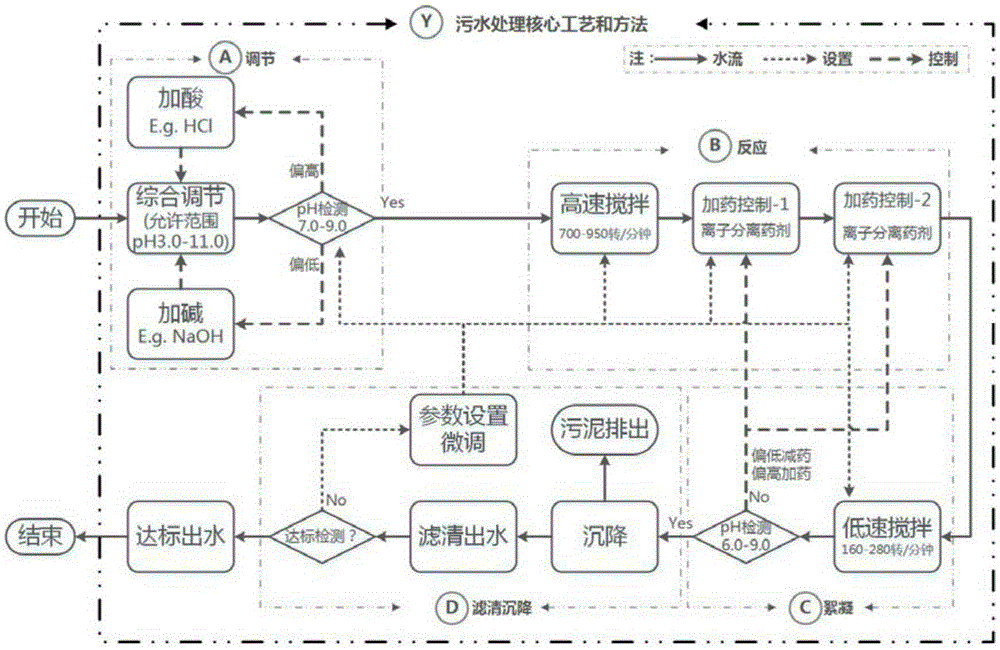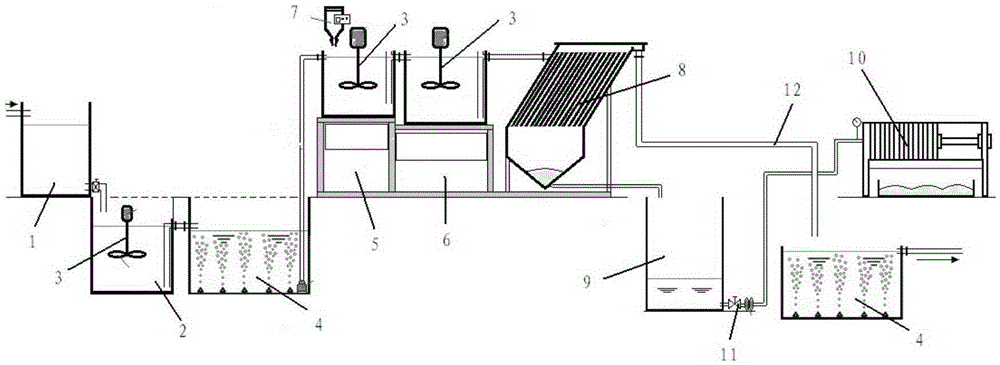Basic process for sewage treatment in printing and dyeing industry
A sewage treatment and process technology, applied in textile industry wastewater treatment, water/sewage multi-stage treatment, water/sludge/sewage treatment, etc., can solve the problems of sludge treatment, high water content of sludge and slow flocculation speed and other problems, to achieve the effect of reducing comprehensive operating costs, targeted economy, and small footprint
- Summary
- Abstract
- Description
- Claims
- Application Information
AI Technical Summary
Problems solved by technology
Method used
Image
Examples
Embodiment 1
[0077] Embodiment 1-treatment of sewage in printing and dyeing industry of a certain enterprise:
[0078] The raw water and post-treatment requirements of the water body are:
[0079]
[0080] Based on the "basic process for sewage treatment in the printing and dyeing industry" of the present invention, the process flow diagram for this embodiment is as follows figure 1 As shown, the process includes ① pre-auxiliary process, ② primary sewage treatment core process, ③ intermediate auxiliary process, ④ secondary sewage treatment core process, and ⑤ post-assisted auxiliary process. The detailed sub-process and each process point process, parameters, control and operation method steps are described as follows:
[0081] ① Pre-auxiliary: the raw water of printing and dyeing industry sewage enters here, mainly including comprehensive adjustment, pH detection, pre-aeration and other links. The details are as follows:
[0082] 1) Requirements for water intake: this sub-process is...
Embodiment 2
[0128] Process step of the present invention can be in image 3 and Figure 4 It is carried out in the mobile integrated complete set of equipment involved. The specific processing steps of the mobile integrated complete set of equipment are as follows:
[0129] (1) In order to cooperate with the ion separation agent to achieve a good chemical reaction effect, first put the sewage into the pH adjustment tank, and add a pH regulator suitable for different sewage at the same time, usually for acidification;
[0130] (2) After the pH value of the sewage is adjusted by the pH adjustment tank, it enters the adjustment tank 2, and the pH value of the acidified water body is adjusted to 7.0-9.0. In order to mix evenly, it can be stirred with an agitator;
[0131] (3) In order to further fully mix and react, and achieve the purpose of breaking the molecular chain of sewage or releasing corresponding substances, the sewage and corresponding chemicals after passing through the adjustm...
PUM
| Property | Measurement | Unit |
|---|---|---|
| particle diameter | aaaaa | aaaaa |
| particle diameter | aaaaa | aaaaa |
Abstract
Description
Claims
Application Information
 Login to View More
Login to View More - R&D
- Intellectual Property
- Life Sciences
- Materials
- Tech Scout
- Unparalleled Data Quality
- Higher Quality Content
- 60% Fewer Hallucinations
Browse by: Latest US Patents, China's latest patents, Technical Efficacy Thesaurus, Application Domain, Technology Topic, Popular Technical Reports.
© 2025 PatSnap. All rights reserved.Legal|Privacy policy|Modern Slavery Act Transparency Statement|Sitemap|About US| Contact US: help@patsnap.com



